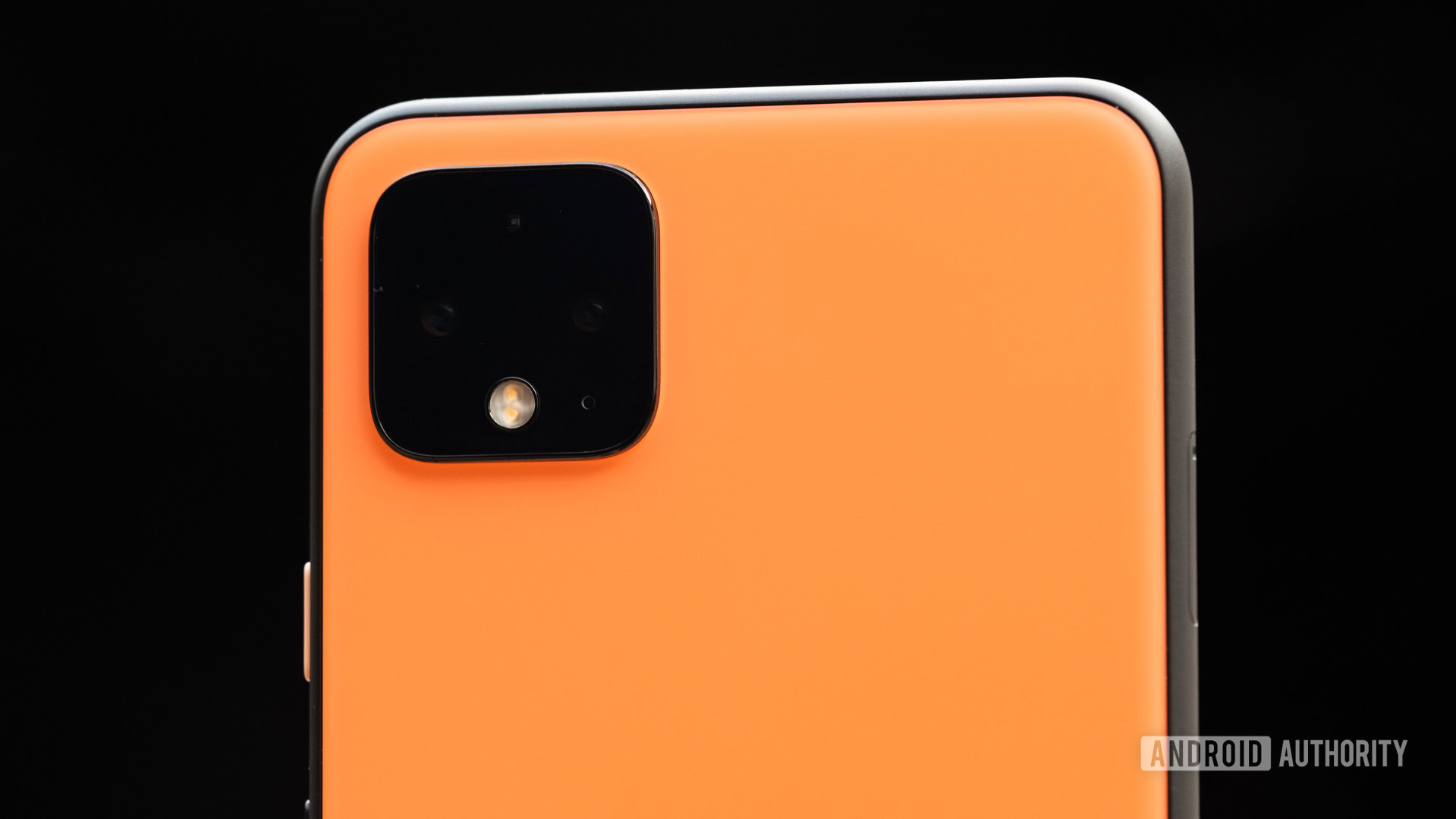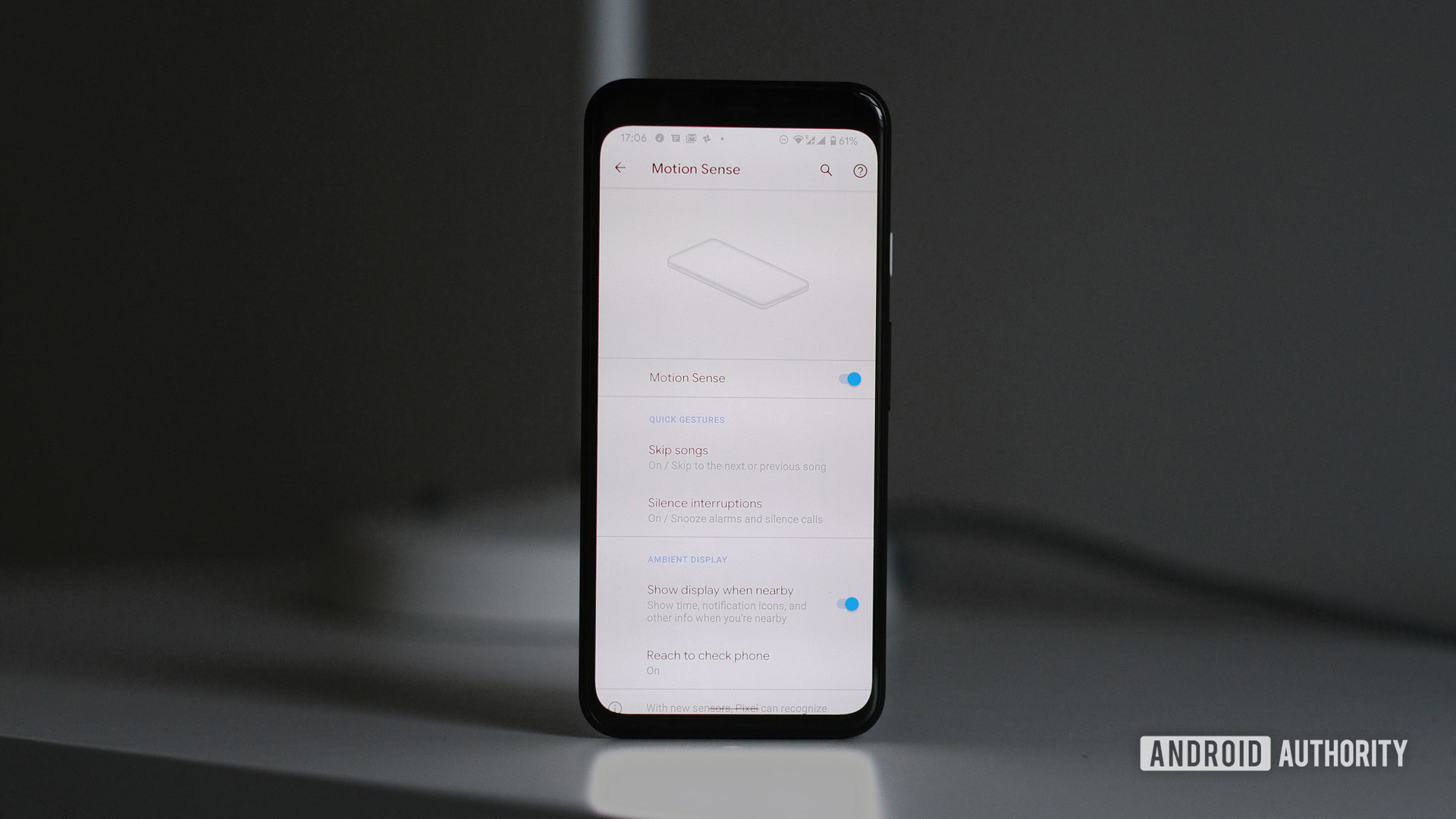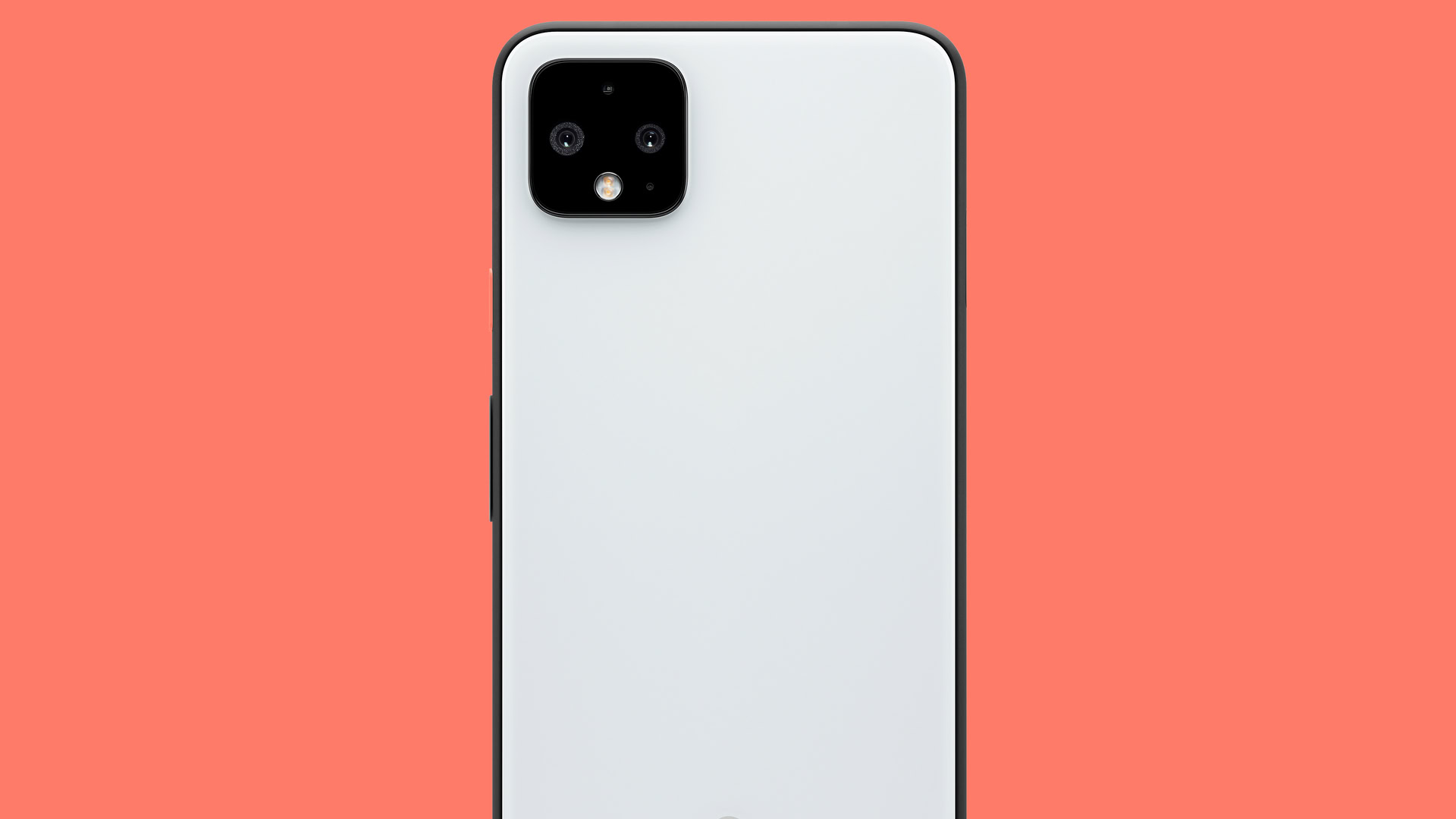Affiliate links on Android Authority may earn us a commission. Learn more.
Soli on the Google Pixel 4: Here's why it's a good thing

The Google Pixel 4 and Pixel 4 XL are here. Of course, they were the worst kept secrets in all of tech in 2019, though the Pixel 4 did come with some extra stuff previous Pixels did not have. One such feature is Motion Sense, Google’s new radar system that supports gesture controls. This is a hardware solution made possible by Google’s Soli radar chip. That makes it unique because most Pixel tricks are software in nature, including its computational photography.
Initial Pixel 4 reviews bring about mixed reactions, especially when it comes to security and battery life. All in all, though, Motion Sense is probably the best thing about the Google Pixel 4 and Pixel 4 XL.
What is Project Soli?
First, let’s briefly discuss Project Soli. Project Soli — or just Soli —is the name of the radar module that adorns the front of the Pixel 4 and 4 XL. It performs a couple of functions. The first is detecting your face for the aforementioned face unlock. Soli sees you move the device in front of your face, then engages the proper sensors to scan your face. It’s also the primary tech behind the Pixel 4’s Motion Sense. Motion Sense is basically a hand gesture system similar to what we saw on the LG G8. We have a whole explainer on how it works here.
The module lives in the phone’s forehead region and that’s why the Pixel 4 has one instead of its usual washtub notch. Ironically, I think it looks better with the forehead than the Pixel 3’s notch, but that’s a matter of personal preference.
Don’t miss: How Motion Sense works on the Google Pixel 4
Pixels pre-Soli

The Pixel — and previously, the Nexus — never felt like part of the crowd. Other OEMs packed in as many features to sell as many units as possible. Google didn’t seem concerned if they sold units one way or the other. The Pixel and Nexus phones were there to show off Android along with a few other software tricks from the one of the world’s largest software companies.
Now, the Pixel 4 and 4 XL feel like Google’s first true steps to competing in a crowded market. Google is no longer asking customers to pay $899.99 (the opening price of the Pixel 3 XL) for little more than software updates and some seriously good camera post processing. Don’t get me wrong, there’s nothing wrong with seriously good camera post processing and software updates, but you don’t fork out $900 for only those things.
It takes more than good camera software and monthly security updates to justify an $800-$900 phone these days.
There is a long debate about hardware features and whether or not people actually like them. Truth be told, I wouldn’t be shocked to learn people enjoy them more often than they don’t. Some of the most popular phones every year have a hardware feature whether it’s Samsung’s S-Pen, the time-of-flight sensor on the LG G8 (or it’s quad-DAC), the pop-up camera on the bezel-less OnePlus 7 Pro, or even the removal of the volume buttons in the HUAWEI Mate 30 Pro.
The inclusion of Soli is a rather major shift for Google. It adds a hardware element that sets it apart from its competitors and while simultaneously joining OEMs in real, actual competition. Issues aside, there is a real discussion about Soli, its capabilities, and what it’ll be able to do in the future. That’s a level of depth previous Google phones simply didn’t have before that all of its competitors had.
Why is Soli such a good thing?

Frankly, it has a lot of potential. Cursory testing shows the tech working better than LG’s time-of-flight sensor. Additionally, it integrates into so many parts of the Pixel 4 experience that its possibilities are only limited by the phone’s capabilities. For instance, we talked about Samsung’s S-Pen Air Actions and found them a little basic.
Soli promises much more gesture support. It may not have all of the tools yet, but it’s capable of way more than almost anything we’ve seen so far in the smartphone space when it comes to commanding a phone without touching it. The dial and slide features shown off on Soli’s official website alone are way better than anything else in this space.
Soli has the potential to make air gestures a thing people actually want to use.
It’s easy to dismiss it as a hardware gimmick. That’s how air gestures are usually labeled and it was no different for the LG G8 or Samsung’s Air Actions. Unlike those two competitors, Soli doesn’t seem like it’ll need another generation or two to get things right. It could be improved with a few software updates to add more functionality. That’s quite a feat for a first gen hardware feature.
Plus, with how well Soli can apparently use finer gestures, it’s not outside of the realm of possibility for Google to add things like sign language support for a potentially limitless number of command motions. How cool would that be?
But what about the other stuff Pixels have?

Those things aren’t as unique as you would think. For starters, the squeeze feature from Pixel devices originated from HTC. Honestly, HTC’s version is better for me because you can enable multiple commands and customize those commands to your liking. Pixels only let you use Google Assistant. Multiple camera setups, 90Hz displays, and even having a cheaper, smaller version of the phone are not new ideas in the smartphone landscape.

There is no argument that Google leads the world in computational photography, but every device uses computational photography to some extent. HDR, stitching panorama shots together, and even post-processing predate the Pixel’s existence by more than a decade. Every phone has computational photography and has for years. The only real difference is that Google does it better in many cases.
Many of the Pixel 4's software features are heading to older Pixels eventually. Can they even really be called Pixel 4 features?
Plus, it’s a software feature that works on multiple phones. Even the Pixel 4’s astrophotography mode and Live Caption features are heading to older Pixels eventually. Why even bother upgrading if the Pixel you have already is getting the stuff the new Pixel has? At this point, I’d just wait until next spring to see if a Pixel 4a is headed our way. It’ll probably have all of these features as well.
That’s another good reason Soli is great for the Pixel 4. It’s a feature Google can’t port to all of its other phones, giving Pixel fans an actual reason to upgrade instead of just waiting for the features to trickle down to their older devices.
The Pixel 4 and 4 XL are far from perfect devices. In fact, it may be another year before Google finally gets it as close to right as an Android OEM can in this day and age. However, I think that Soli is a step in the right direction and Google is finally starting to act like an Android OEM. Let’s see what Google does with Soli over the next year.